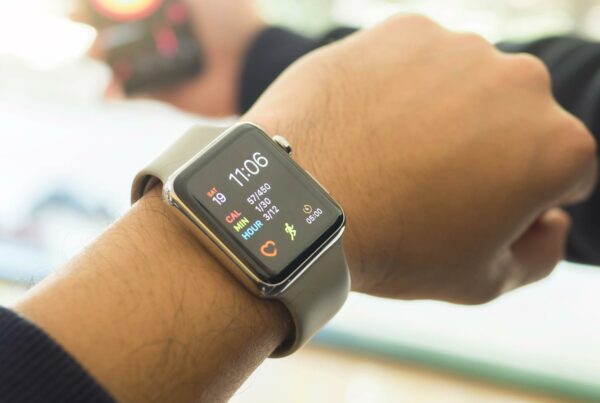The elusive healthcare data standard…
Lack of an established data standard in healthcare has long posed challenges for healthcare providers. When every healthcare setting has unique requirements for managing health information and data, the exchange of data is difficult. Data standards provide a framework for the storage and exchange of data. Without it, data transfer is inefficient and error-prone, rendering data unreliable.
Early on, Health Level 7 (HL7) emerged as the primary standard. It is not universally adopted and has become dated. Currently, the HL7 organization has been developing a new standard it hopes will be accepted as the industry standard.
In fact, several standards organizations have been working diligently to develop the next generation industry standard. These fall in one of four categories:
- Terminology standards. These are sets of codes, terms, and classifications clinicians use on a daily basis. They are designed to communicate medical language with precision. Examples include ICD-10 and ICD-11 (International Classification of Diseases) and NDC (National Drug Code).
- Content standards. These are special standards that describe the nature and organization of clinical data. Examples include HL& v.2 and v.3.
- Privacy and security standards. The privacy and security of electronic patient health information is governed by the Health Insurance Portability and Accountability Act (HIPAA). Compliance is required of all healthcare providers in the US.
- Data exchange standards. Rules govern the encoding of messages that carry information between systems. They facilitate exchange of patient data and are critical to interoperability. FHIR is among the most recent and widely used standards in data exchange.
In 2019, the Department of Health and Human Services (HHS) issued a rule that would require electronic health information to be easily and securely accessed. This prompted broad expectations that a standard would take hold to establish uniformity among data, facilitating seamless interoperability and leveling the playing field among vendors and developers. In reality, multiple standards have since emerged.
And the obstacles in the way.
Standardizing health data is complex, but essential. Unreliable or ambiguous health data can have life-or-death consequences. But patient health information is frequently subject to myriad variables that can be lost in translation when exchanged between systems. Providers must have confidence that the data in their systems is complete and accurate to ensure proper, effective, and safe treatment.
Several standards organizations have been improving data standards and working toward establishing an industry-wide format. What are the biggest obstacles that remain in their way?
- Missing or fragmented data. Limited exchange of data between systems and institutions has resulted in a scenario in which many patient records in Health Information Exchange (HIE) systems are incomplete.
- Aging legacy systems. Providers using older systems often use incompatible data formats, impeding any automated exchange of data.
- Complex, evolving regulations. Much ambiguity exists around the regulations for collecting and exchanging patient health information. Learning and implementing regulations can take a long time. Frequent changes or additions to regulations slow implementation and increase the risk of error.
As discussed in our recent post on EHR interoperability, comprehensive industry data standards are absolutely critical to ever getting to seamless, system-agnostic interoperability. The benefits significantly outweigh any challenges along the way to standardization.
Healthcare providers would be wise to keep their fingers on the pulse of what’s happening. Standards that have emerged recently have more potential to being adopted as industry-wide standards than any we’ve seen before. FHIR in particular has very quickly become the most popular standard, likely to replace HL7. Getting started now will put you in a better position as the industry moves closer to establishing a new standard.
FHIR vs. HL7
FHIR and HL7 were developed by the same standards development organization, HL7 International. FHIR improves upon HL7 in several ways. Notably, it supports a variety of transfer mechanisms and is suitable for use in a wide range of contexts. Its versatility is what sets FHIR apart from HL7 and other standards.
HL7 v2 was the first to become ubiquitous in healthcare, covering every need of large hospital systems to smaller private practices. It was designed to support a central patient care system, with less attention on facilitating exchange of data between systems. Currently 95% of healthcare instututions in the US use HL7 v2 in their systems. It is also used in dozens of countries around the globe.
HL7 International developed FHIR (Fast Healthcare Interoperability Resources) in 2012, in response to fast-growing data volumes and the increasing use of mobile devices in healthcare. With flexible data definitions, FHIR transitions from a document-based approach to sharing discrete data elements. Its API enables the creation of custom interoperability solutions, which is the primary driver of the popularity of FHIR. It is now being used in most EHRs in the US.
Why You Can Bet on FHIR.
- As FHIR has increased in popularity more developers and vendors are engaging with FHIR every day, resulting in an array of available solutions.
- Its modules can be combined to cover many use cases, with a design that allows integration into mobile apps and cloud solutions of any scale—from small private providers to national institutions.
- FHIR is built with inherent flexibility that makes it both future-proof, and a suitable choice to upgrade legacy systems.
- It uses an open-source development model, expanding the possibilities for the creation of future, compatible apps
- FHIR has a solid background, built by HL7 International and based on the most well-established standard to date.
Forward-thinking, forward-moving
If you’re still contemplating whether or not your healthcare organization should use the latest data exchange standards in the industry, consider the benefits:
- Data integration across all systems
- Enhanced, data-driven decision-making
- More efficient and reliable administrative processes
- New electronic patient services and offerings
- Improved overall patient experience
The changes in healthcare data communication are irreversible. The rising popularity of mobile apps, and the need for access to patient data from any point in the country or abroad, are pushing the industry forward. A seamless flow of data—among providers, but that also engages patients in their own care—is essential to the future of healthcare.
In an industry already shifting toward increased transparency and data sharing, the pandemic and vaccine rollout have given motivation and momentum to the push for interoperability. In our latest ZipRadio podcast, a panel of seasoned HealthTech experts discuss the persisting challenges to interoperability, expected impacts of Covid-19 on recent efforts, and interoperability solution innovations.
















